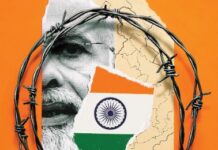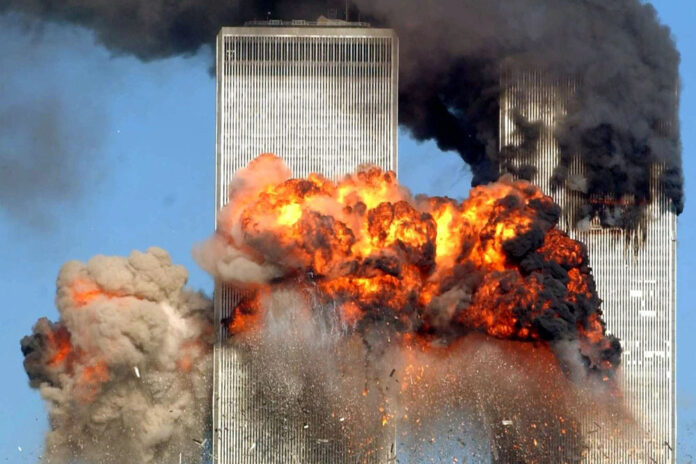News tickers again indicate talk of another round of war on terror. Despite the fact that the proverbial ‘spine of terror’ has been broken many times since the incidents of 9/11, the fall of the Taliban in Kabul, Lal Masjid and Tehrik Taliban Pakistan waves of terror. It is ironic that during the two decades the Pakistani state; best represented by the established order, has simply failed to reign in what is called a ‘vicious circle of terror’ in Pakistan.
A superficial look at the causes might lead any reader towards what was the fallout of 9/11, a deeper look will reveal that Pakistan too had skeletons in the cupboard and what happened during the last two decades in fits and starts was Pakistan’s half hearted attempt to nullify the ill impact of the policies it tried to evolve in the aftermath of the 1971 secession of East Pakistan. Ironically, the fallout of 1971 too was the making of that very established order.
The strategic depth quagmire allows the deep state a unique opportunity to drastically review its priorities. That can include a review of foreign policy; national security imperatives; a move from national security-centrism to trade-centrisim and above all mending fences with other borders. A cool minded soul-searching is the only option available
In 1971, the defeat of the military might of Pakistan established order, along with the loss of half of the country; and the creation of a new state of Bangladesh, sent into frenzy the established order to find the way out in a rare moment of retrospect. Pakistani geopolitical planners thought that with half of the country gone; a hostile neighbour in the east, they felt that Pakistan needed to have strategic depth in the form of a client state which Pakistan can relate to, or depend on in times of crisis.
Iran was never Pakistan’s favourite for the job despite the fact that the cultural context was strong; the geopolitical linkages were not so bad. It was Iran, which recognised Pakistan after 1947. In the aftermath of the 1965 war-related arms embargo, it was again Iran which provided on its payment voucher, the former West German F-86 aircraft; the machines which were handy assets for the next conflict in 1971. Compared to that Afghanistan never recognized Pakistan with an open heart. Having more common grounds with Indians; through the left movement. Ironically the Taliban despite their so-called post-9/11 maturity in the post August 2021 period; still harbour the same feelings about the Durand Line as were felt during Zahir Shah’s reign.
Pakistani military planners, despite these ground realities; took a dangerous gamble; that of cultivating Afghan groups for its own ends. When the Governor of the then NWFP; a PPP leader, was killed in a bomb blast in Peshawar University in 1975, the ZAB government used the incident to remove the non-compliant governments in NWFP and Baluchistan. On the foreign front; it started cultivating the dissident element in Afghanistan.
The Kabul of the 1970s was a strange mix of left politics and religious radical groups making their respective presence felt in the campuses. It was no coincidence that radical students like Gulbadin Hekmatyar and Ahmad Shah Masoud found their opponents in the left face to face.
These very Islamist students were the ones; who were invited by the left-wing PPP government to Pakistan and assured of assistance in their armed confrontation with the monarchy in Afghanistan. The events of 1973 first deposed Zahir Shah in Kabul. The 1978 coup against Sardar Daud installed a leftist government in Kabul. With the Islamists already working with the Pakistani intelligence for deposing the monarchy; the target was changed to the left wing one. The invasion of Afghanistan by the then Soviet troops in 1979 provided the Pakistani establishment with a godsent opportunity to push for the dream of strategic depth; In simple words, it meant that the Afghanistan liberated from the Soviet yoke would always treat Pakistan as a benefactor. Being the benefactor; Pakistan would be able to dictate its terms to the successor government in Kabul; the policy planners visualized. It was no coincidence that when the Jamiat Islami brokered coup which deposed the leftist Dr Najibullah in April 1992, it was the whole Pakistani establishment; complete with ISI chief, COAS and the Prime Minister huddled up in the PAF C-130, went to Kabul to congratulate Ahmad Shah Masoud. The mortar fire by Hekmatyar troops when the PAF plane was about to land; was in fact indicative of the erratic behaviour of the Afghan political elite; which Pakistan thought; it would be able to cultivate in the long run.
What happened till 1994 is history. However, the assertion by the then PPP government’s Interior minister, referring to the surging Taliban hordes as ‘our boys’ was indicative of the Pakistani establishment’s flirtation with yet another group in Afghanistan; which could accord them the dreamed-off strategic depth. The formal ascension of the Taliban in November 1996 was in a way the culmination of the Pakistani dream. It was not unusual to dial Kandahar with the Quetta PTCL code or Jalalabad with the Peshawar code. That strategic depth also benefited a new breed of sectarian militants; who had the ‘divine’ liberty to cross over into Afghanistan and vanish after undertaking a ‘massacre’ of ‘infidels worse than the infidels’ in the settled areas of Pakistan.
The 9/11 episode put off the lid of secrecy of the Pakistani establishment’s affair with the Taliban movement. The American occupation of Afghanistan put in cold storage the Pakistani dreams of ever having the strategic depth. That period was punctuated with Lal Masjid episodes in Islamabad, followed by the birth of the Pakistani chapter of Taliban, the TTP; which was a far more blood-spilling variant of the Taliban.
The Pakistani establishment undertook a number of offensives between 2009 to 2016; in a way trying to neutralize them. However, the geopolitics had new tests in store for them. In August 2021, the Americans in a strange tactical move left Afghanistan, leaving the region bewildered about the next steps.
When the Taliban regained the control of Kabul; they tried to enforce their own decades old creed in the same manner. The month of August 2021 coincided with the Islamic month of Muharram; which during the Karzai and Ghani governments has been a business-as-usual scenario for the small Shia minority in Afghanistan. The Taliban hordes started removing Ashura banners in Kabul and elsewhere.
Ironically, the clerics in Muharram congregations in Pakistan during the same period were advised by the sleuths not to criticize the resurgent Taliban. On the other hand, the Taliban were mysteriously advised by their equally mysterious well-wishers to be soft in their implementation of their dictates on the society.
These advisories again revealed the continuous ‘infatuation’ for the Taliban in the hearts of the Pakistani establishment. However, it was not so to begin with. As the Bannu incident reveals the undercurrents, the TTP seems to be in comfort with the resurgent Taliban in Kabul. Given the fact that the TTP is active in the non-settled areas; hitting symbols of the Pakistani state, especially the KPK police, Pakistan seems to again lose the game.
As things stand, the fencing issue between Kabul and Islamabad reveals for all practical purposes that the so-called honeymoon is over. While the future of Afghan and Pakistani relations might get into the cold stage, the baggage of the flirtation with half-baked Islamists like the Taliban through the last three decades has come to its logical end.
Given the fact that failed economic takeoff breeds militancy in any society; the stakes for Pakistan are great, but options are few. Pakistan cannot go to war with Afghanistan; while not risking equal pressure from the Indian side. Iranians have been effectively alienated, save for some brotherhood still lingering from Safavi/Mughal eras. The West is already alienated but for a few jobs it wants Pakistan to undertake.
The strategic depth quagmire allows the deep state a unique opportunity to drastically review its priorities. That can include a review of foreign policy; national security imperatives; a move from national security-centrism to trade-centrisim and above all mending fences with other borders. A cool minded soul-searching is the only option available.























